By Jeffrey A. Rendall; Images courtesy of Nike Golf
BEAVERTON, OR – It’s no secret, drivers are expensive – and they’re also ‘specialized’ to the point where you’ve got some crucial decisions to make when purchasing them, including loft, shaft flex and length at the very minimum.
And as is often the case for amateur players, what we ‘think’ we can do – and what we think we need to do it – aren’t necessarily at a common meeting point. Face it, many of us choose drivers with our hearts rather than our heads.
A lot of bad shots begin just with a wrong turn at a golf shop, in other words.
Reality always reveals the truth, however, as Nike Golf’s Tom Stites (Director of Product Creation, Clubs) believes – Stites says there’s often some ‘vanity’ involved when choosing a driver. To put it another way, our egos get in the way.
That’s where Nike’s latest creation comes in, the appropriately named STR8-FIT driver. Simply put, the STR8-FIT driver is designed to allow you to choose the best loft and face angle for your swing in the ‘privacy’ of your own practice range or golf course – and takes ‘vanity’ out of the equation by providing the ability to add loft without telling anyone.
Or, as Stites would say, the STR8-FIT allows you to ‘screw up’ more of the settings when buying a driver and still end up with a properly fit golf club.
We caught up with Stites recently and asked him to explain what motivated Nike to enter the adjustable club market – and how the STR8-FIT might be able to help your golf game, if not your ego.
GTMA: Can you talk a little bit about the concept of the STR8-FIT driver, and how you came up with it?
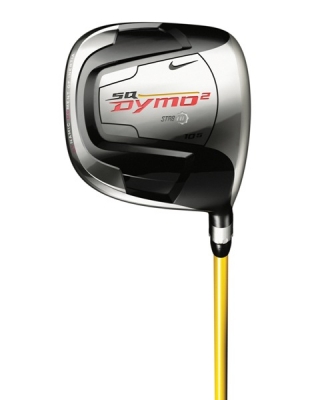 |
Tom Stites: Well, we know that nothing affects ball flight as rapidly as changing the loft and the face angle of the golf club.
And to a lesser extent the lie does change the ball flight. But the loft and the face angle will always change that initial direction that the ball comes off. Golfers have a difficult time hitting the center of the club face, and a club can be forgiving in a lot of different places – but if the face is not square when it makes contact, no amount of forgiveness is ever going to send the ball in the right direction.
And even with all the things one can do in fitting the golf club for length and other specifications… we always ask people, first, to choose the right loft of the golf club, and then in the past, we said you’ve got to have the right shaft.
Well, those things are still important – but more important, if I can literally bend every golf club… you know, I hit it at the range and I’m trending in a certain area, if I knew how to bend every golf club I could change that ball flight dramatically and immediately.
And what STR8FIT allows us to do is, with a non-concentric bored hosel -- by putting it at an angle, and then allowing that angle to rotate, we get this wide range of face angles and lofts and lies. (Editor’s note: The club head detaches at the hosel and there’s a wrench that will allow you to easily reassemble the club at a different setting).
So there’re eight different settings inside every STR8-FIT golf club, and that golf club can be hit eight very distinct different ways – and it allows us eight clubs in one, and the ability to find one of those settings that allows most people to hit the ball better.
And the great thing about it, too, is there’s a whole lot of what I call ‘vanity sizing,’ necessary for golf. It’s kind of like ‘relaxed fit’ when it comes to jeans. If we have someone who feels like they’re a 9.5 degree player, but truly the launch conditions work better for them at 10.5 or 11 degrees – they can buy a 9.5 degree driver and there are some settings on the STR8-FIT that allow them to hit it 10.5 or 11 degrees of real loft.
It takes a little bit of that ‘vanity’ or ego problem that people tend to inflict on themselves when choosing a driver – unnecessarily, but they still do it.
So, adding all these different options, for different loft, different face angle… and then, to a lesser extent, different lies – it allows each golfer to find at least one, and sometimes even more settings that work for them. They’ll be able to find at least one setting with the most ideal launch conditions that allow them to play the game better.
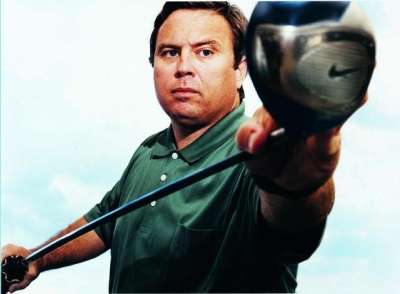 |
| Tom Stites |
GTMA: How would you recommend, for an average golfer, when walking into a shop, that they go about finding that optimal level?
Tom Stites: Well, there’re several different ways.
The best way is to take it out to a range and/or a golf course and hit various shots there in real golf playing conditions. If it’s a guy that’s normally playing a 10.5 degree driver, relatively low club head speed – he’s probably a 10.5 degree starting point – so you take STR8FIT 10.5 degree with an R flex… they pretty well know whether they’re an R or an S flex.
Start it off in the neutral position, then observe. Where does the ball flight go? Are you consistently hitting it too far left, too far right…? With the STR8FIT wheel, basically – you’ve got a little fitting recommendation. Then roll the hosel and lock it in some different locations that will correct whatever that tendency was that you saw in that neutral position.
Sometimes the neutral position works great. But, if it doesn’t, then you’ve got some degree of choice available – you know, two degrees plus or minus left or right or up and down. There’s quite a bit of range of change there, and that will make a big difference in the ultimate outcome.
GTMA: I talked with a pro recently who fits golf equipment – and he said, unless you’ve got some consistent ball flight tendencies, having an adjustable club really isn’t going to do you much good. What would you say to that?
Tom Stites: Well, I can see why he would feel that way.
It’s true, average golfers do hit it all over the place and yeah, they don’t do the consistent thing from shot to shot. Check, check. But, if they do develop a golf swing at some point, and the consistency, then there’s still seven other settings in there that they haven’t used yet – and one of those is most likely, better than a 50% chance of fitting that consistent new golf swing.
That’s one of the selling points that I’ve used with the couple hundred people that I’ve fit – you know, we can fit you for what your bad tendencies are now, and that’ll make life a little bit better. But, say you go and get some golf lessons and you’ve developed this inside path to the swing – we can just open this face up and give you a more open face angle, and you may not have to buy another driver.
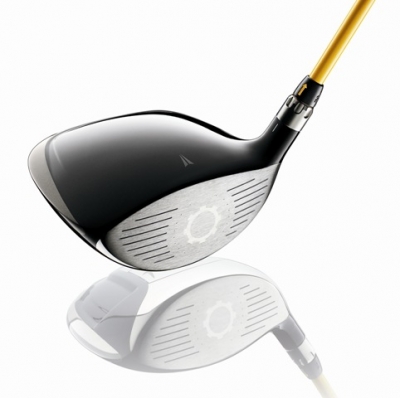 |
It kind of swings both ways.
GTMA: So you can kind of grow into it.
Tom Stites: Definitely.
So what is a negative in the golf pro’s mind can turn into a positive if his students do develop a good golf swing. It’s certainly not going to hurt ‘em.
GTMA: Do you see adjustability as here to stay, or do you think it’s going to gradually go back to the ‘one setting’ drivers?
Tom Stites: It depends to me – again, this is me talking, not Nike – golf clubs have just gotten so cheap, and technology is going to be dumbed down the cheaper golf clubs get in general. And we’ve gone from a $500 average price five or six years ago down to the $299/$199 inexpensive driver now.
So what you’re not going to get is your ability to have multiple decisions in the same golf club unless you have the adjustability factor built in. It’s the one area that the USGA has not regulated. And, it gives you some variety, some versatility as your golf swing changes, or course conditions change, and you want to find the proper optimum trajectory.
There’s just no way that you can buy cheap $149/$199 drivers that have a consistency of plus or minus one degree in manufacturing -- so if you buy a nine degree, you may get a ten, or you might get an eight. If you buy a 9.5 degree adjustable driver, you’re going to get all those things, but you can change it. You can’t change it if it’s fixed.
I believe that it’s an area that’s going to grow and become more popular and technically, and from a fitting standpoint, it has value.
 |
It still remains to be seen how much market value the rest of the world gives it, when they can buy super cheap drivers, name brand stuff. But… if you look at it like ‘I can get anywhere from two to eight drivers’ in the same purchase price with an adjustable driver as opposed to going and buying that many non-variable drivers on the market.
GTMA: Do you think we’ve seen the last of the ‘draw’ and ‘fade’ bias drivers?
Tom Stites: Well… I think you won’t see too many fade bias drivers, because there aren’t too many people that…
GTMA: Need help fading?
Tom Stites: (laughs) Need help fading. And I don’t believe you’ve seen the last of the draw bias either, because that definitely is a major swing flaw for a lot of people.
GTMA: So for somebody who has a slice tendency, the draw bias driver would help correct that, is that right?
Tom Stites: Draw bias, and the closed face angle. So you can get it a couple different ways. You can weight a club up to the point where you can help a golfer close the face a little bit more, or you can close the face angle with an adjustable face like you’d find with the STR8FIT – which is more effective.
GTMA: What is the role of the shaft with the adjustable drivers? I know you mentioned earlier that the shaft is less important than it used to be with an adjustable driver?
Tom Stites: It’s still very important – but it’s less important, I think, than taking the proper head loft and face angle.
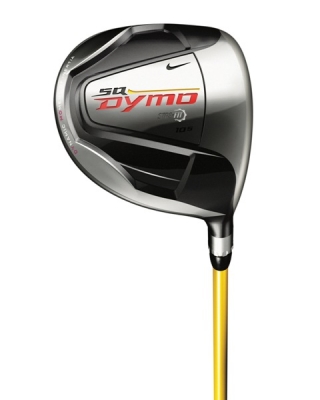 |
There’s a reason that’s your first choice (loft and face angle) when you’re going through a fitting system. Let’s get the loft and face angle in kind of a sweet zone for a specific golfer, and then do the fine tuning with the shaft. I still think the shaft is important, but to me, it’s more of a fine tuning adjustment as opposed to a major adjustment.
In years past, because of the custom fitting industry and the shaft industry, we’re trying to sell you different trajectories in terms of ball flight and high and low, left and right – by what kind of shaft we’re putting in there.
That has been somewhat possible with the degree of change that one can get by doing that (changing shafts) – but it’s only a quarter or a third as dramatic as the degree of change that you can achieve when you work with the launch conditions off the face angle and the loft. And that’s what’s possible with an adjustable face or an adjustable club.
GTMA: Are there any other trends that you see as far as drivers go? What’s the future look like?
Tom Stites: Well, they’re not going to get bigger (head sizes) – we can’t build ‘em bigger. There may be kind of a size-back a little bit because of – when you go to a full 460, and you try to make it with as high a moment of inertia as possible, it’s expensive to do that.
The marketplace is not as accepting of full value drivers anymore – or at least not as much.
The performance of the heads themselves is not going to change as dramatically as it has in years past when you could just make ‘em bigger and faster with a higher moment of inertia.
All of that’s over now because of the USGA. But, if you can make you club smarter and choose them more correctly and match them with launch conditions and launch monitors and real ball flight out on the range and out on the golf course, people can do smarter things with their golf clubs.
And, knowing what to do to change my driver is only part of the battle. Having a driver that allows me to actually effect that change is the other part of it.
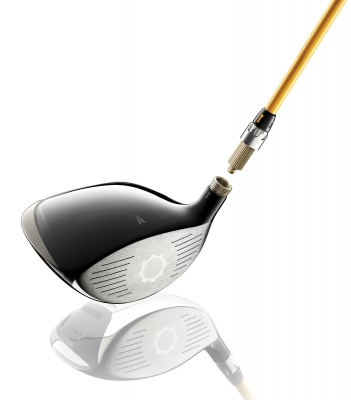 |
If you walk out and say ‘man, I wish this driver hit a little bit higher’ – there aren’t a lot of options that you have if it’s not adjustable.
GTMA: In using this driver and other drivers, how well I do depends on if I can get my hands through – so I either hit a fade/slice, or a dead pull. Can you ‘adjust’ that?
Tom Stites: I’ve seen that golf swing before. (laughs) Not necessarily yours, but you’ve just described one that’s quite common.
GTMA: So what setting would you recommend for that?
Tom Stites: Well, I’d start in the neutral and then work it slightly open… unfortunately, the hand release thing is not as changeable as – especially if you’re consistent with that – it’s not quite as changeable as some of the other swing flaws.
GTMA: Is there anything else about the STR8FIT that you would like to get across?
Tom Stites: Just that if you look at it from the total value of all the different clubs that you get in one, I think it’s probably one of the better values in the history of the game. And it’s what’s possible.
You can make several bad decisions in buying a golf club that are mitigated because there are other settings there in the STR8-FIT. If you make the wrong loft decision, or if your club is on the wrong side of the ‘tolerance’ in manufacturing – say you made the right decision but the club’s on the wrong side of a manufacturing tolerance – you wanted a nine and you got an eight and you probably really need a ten, you’re pretty well cooked.
Whereas this golf club allows – I don’t know quite how to put it – but it allows you to ‘screw up’ more things and still have a shot at it.
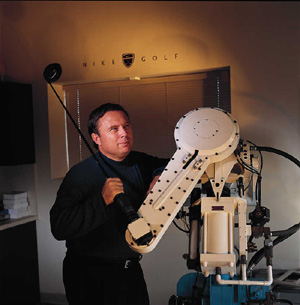 |
GTMA: What would be the advantage of buying the Nike version over some of the other adjustable drivers on the market?
Tom Stites: Some of the adjustable drivers are not 460cc’s – their moment of inertia’s are lower, so they’re inherently just not as forgiving. Even if they weren’t adjustable, this one versus the other one -- there’s just some inherent dynamic things that make it (the STR8-FIT) very playable.
We also know that we have the concentricity of the bore itself – how much is bored off axis. We’re a full degree more than some of the others.
We’re all pretty well claiming the same amount of adjustability left and right, but we know that ours is more true, and you get the full value. We’re not ‘making it up’ as much as other people. It’s more accurate.
Those are basically my two biggest points – it’s faster on mis-hits, which means it’s going to fly further on mis-hits and that’s because it’s bigger and has a higher moment of inertia. If you hit the center, there’s probably not as much difference, but the average mis-hits will be four to eight yards longer with our product.
___________________________________________________
Having tried the STR8-FIT driver, I found that it performed as advertised – you can certainly alter the ball flight as it suggests, though I also encountered the same inconsistency problems that I have with any driver, or any golf club for that matter.
It’s a helpful tool, but not a ‘magic’ cure that will fix your golf swing.
Adjustability adds options that simply aren’t available in a ‘static’ driver – but I’d also recommend that you consult with a fitting professional when buying the driver and when trying to find that one ‘perfect’ setting that gives you the best opportunity for success.
 |
And it takes time – if you’re serious about maximizing your performance and have the time and patience to give all the settings their due, then adjustability is probably for you.
Tom Stites has enough experience in the golf club design field to know what he’s doing, and he’s designed all types of clubs for the best player(s) in the world. I would certainly suggest that you take Stites’ advice and try the STR8-FIT driver if you’re in the market for a high-end adjustable club – and see if you can hone your golf game to the highest level possible.
Details:
Nike Golf’s STR8-FIT Driver
Available at your higher-end golf retailers and club pro shops.
Check out more information about Nike Golf products at: www.nikegolf.com. Like you’d expect from Nike, the website puts on a good show, too.
| Related Links | Comments on this article? | |
|
Maryland National Golf Club Hollow Creek Golf Club Rocky Gap Resort PB Dye Golf Club in Ijamsville Whiskey Creek Golf Club |
E-mail Jeff Rendall, Editor: jrendall@golftheunitedstates.com |












